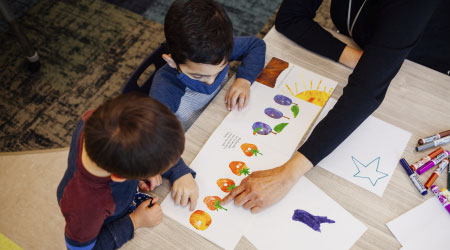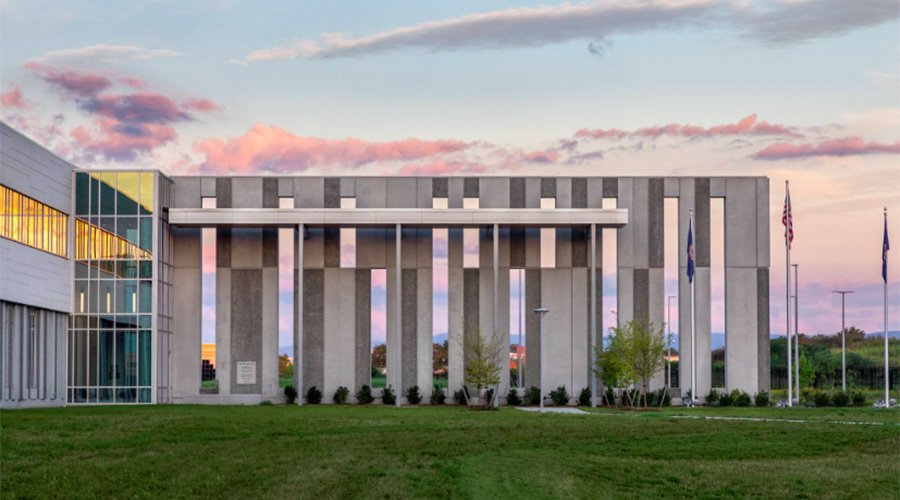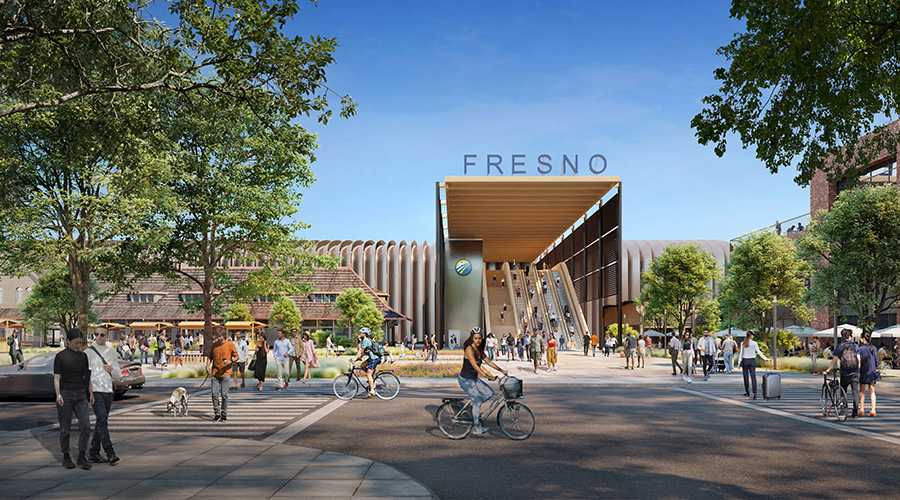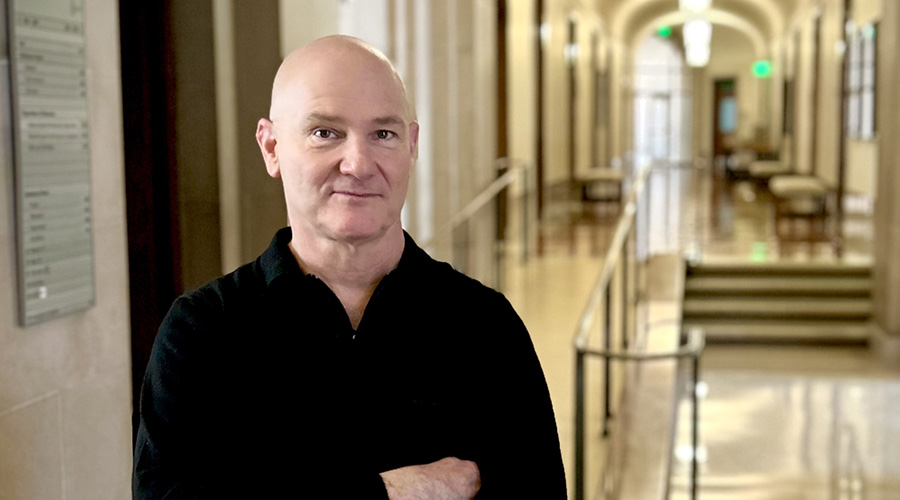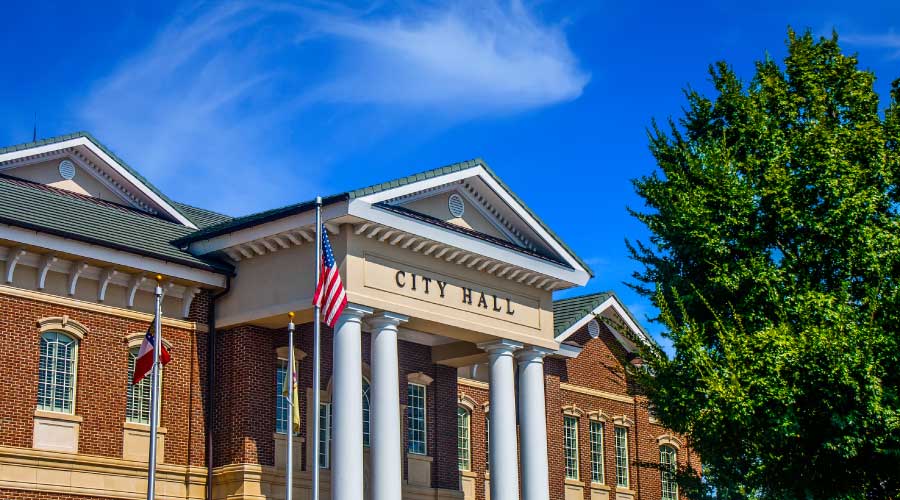Libraries Get Creative to Navigate Pandemic Headwinds
To provide essential services during the pandemic, libraries had to think outside the box. How will libraries transition into the post-pandemic world?
The past several years were unlike any other, and the impact to organizations from health care and schools to retail and restaurants was both jarring and life-altering.
Public libraries were no different, as buildings closed like other facilities to mitigate the spread of the infectious disease. Yet, for families, students, job seekers, and other residents, instead of being met by locked doors, they found something revealing in these seemingly quiet centers. From wireless internet access in parking lots to distribution centers for school lunches to workforce development programs, library staff put into action mechanisms that weren’t really new, but maybe had been unseen by so many residents unfamiliar with today’s libraries.
As Julius Jefferson, president of the American Libraries Association, stated in the State of America’s Libraries 2021, “Libraries kept Americans connected in ways that brought our communities closer. Buildings may not have been open, but libraries were never closed.”
Even as buildings reopened in some states since the latter months of 2020, the ongoing pandemic and rise of variants has forced staff to be nimble and resourceful in their services and operations, ready to pivot to meet the needs of communities in search of help and resources. With every challenge, though, there was an opportunity for libraries to learn in a fashion that staff never had the freedom before.
Moving forward, the question becomes what is the future for the nation’s libraries? What have staff learned about the experience of the past nearly two years? What is the value of the physical space, and, more importantly, what is the value of a community gathering spot whose history has been built on the dissemination of knowledge and free access to information?
We sat down with four library administrators from around the Midwest – including Steve Potter of Mid-Continent Public Library headquartered in Independence, Missouri; Ryan Johnson of O’Fallon Public Library in O’Fallon, Illinois; Steve Hunter of St. Louis County Library with locations throughout the St. Louis region; and Jason Kuhl of St. Charles City County Library District, west of St. Louis, Missouri – to gain insights into the impacts the pandemic had on their operations and how that is shaping their services and operations moving forward. Most revealing about the comments is that COVID has not changed the essence of libraries. To the contrary, the pandemic has only enhanced libraries’ values even as the look of their services have evolved.
“Libraries help people get over the hurdles and challenges of life,” said Potter, Mid-Continent Public Library director “Libraries, at their core, are about building community.”
Why a Conversation
Research mission statements for public libraries and a consistent theme appears even as the words vary: public libraries are about building individual knowledge and community through open and accessible information and services. Words like “free,” “access,” and “enrichment” sit along the side of “support,” “enrich,” and “empower.” “Materials” and “information” also appear regularly.
What happens to people and community when “access” is closed? Do libraries lose their essence? How do they continue to be not just community assets but community builders if what has usually defined them – classes, computers, and materials – suddenly are limited or off-limits?
This was the purpose for the qualitative conversations. Because libraires are so centralized and crucial to the vitality of communities – on both a macro and micro level – the main two-fold question arose: how does a library thrive, in the short term, when it has to close its facility doors? And, in the long term, how does a pandemic forever change the library world? What did we learn from this? What will remain in place? What changes will we keep? What was re-envisioned?
This was not to presume that modern libraries were depositories of information. To the contrary, we came into the conversations knowing that the public library of today is a living entity, evolving and adapting to the needs of the community. For more than three decades, libraries had been pivoting and shifting their services.
As much as anything, COVID put a spotlight on the creativity and adaptability of libraries and their staff. From maker spaces to technology infrastructure to job training centers, libraries moved beyond their identity as centers for reading and study years ago. Libraries have become the cultural backbone of a community, serving students, adults, and seniors equally but with nuanced services that cater to those individual generational and unique community-based needs.
What COVID also did, though, was throw libraries into a time when they had to be more creative and pivot at a moment’s notice. Unlike schools and professional service organizations, pivoting was more than taking services offered in person and putting them online. The very nature of the services that libraries offered had them straddling that line between the online and physical world.
The conversation was designed to understand what the long-term ramifications are for public libraries as a result of COVID-forced adjustments, and how this will influence the design of library centers in the future. Like every project type, buildings are influenced by how people work and function – not just about the activity but also the traffic flow, the protocols for security and cleaning, the goals to meet the mission, as well as supporting future operations that may not be part of current services.
Questions included the general operational inquiries, including how the pandemic affected the library, including closures, and what services they could continue offering, as well as how they were operating one year later. Questions then explored more specific pandemic-response tactics, including contact reduction and social distance strategies, material distribution and storage, technology modifications, and HVAC system operations and upgrades.
We also sought information on the activation of outdoor spaces from gardens and patios to parking lots, as well as any modifications to interactive areas and how those may or may not have been brought back online once buildings reopened.
All questions were open-ended and were designed to lead to in-depth conversation. With the responses, there was a qualification – there has been little time to test the long-term sustainability of the strategies that many of the libraries adopted. In addition, the ongoing nature of the pandemic with its waning and waxing impacts on the community has libraries still adapting. As one director in north Texas noted, if someone had told him 18 months beforehand that he would be preparing his library to be a quasi-medical clinic, he would have said they were dreaming.
Yet, that statement demonstrates the vital role libraries play in their communities and what communities and designers can learn from this period about library resiliency and adaptability. For so many residents who may not have a choice, libraries are where they must go to access needed services. Learning how some directors and staff nimbly navigated this tumultuous period can help library boards, communities, and designers better support their efforts to evolve moving forward.
A New World
While born out of necessity as a way to stay accessible when buildings were closed, many of the strategies undertaken to provide on-going services during the pandemic did more than allow residents access in extraordinary times. They created a more inclusive and welcoming environment in which people across the demographic spectrum could find themselves feeling seen and heard.
As populations crave more options that fit into their everyday lives – from moms whose schedules fluctuate day-to-day to teens seeking spaces that flex to their changing needs and social circles such as quiet places to study one day and do gaming the next – libraries, like retail, benefit by reimagining how they offer services.
Instead of grouping their patrons into one category or another and then shaping their services accordingly, libraries are now adopting an “as-well-as” mentality to fit the ever-changing needs of residents.
So, as well as providing access to browse the collection of physical books and media, the library will also provide curbside pickup or drive-thru windows along with expansive digital resources. Libraries will provide for in-person programming as well as continue with the virtual programming developed during the pandemic so that an author event held in person at the library could also be broadcast live to a wider audience. As well as providing computers with internet access inside, libraries will continue to provide wife mobile hot spots for check out.
On the heels of lock downs and closed facilities, libraries took all the transformations they had been doing through the past three decades and accelerated them. For the community, not only did they encounter a library that proved nimble in the face of adversity, but they found a center that is crucial for healing and coming together.
For the libraries, this is giving them freedom to try new things without friction since the pandemic gave most people no choice but to experience change. With the proliferation of mobile technologies and a base of patrons who expect digital access, libraries have a nearly clean slate with which to imagine its future. For library systems with many locations, it also is giving them the opportunity to leverage their strengths as a multi-location organization with both access to and the trust of communities who may need vital services like food assistance or vaccine access, especially since partnering organizations would already have the demographic and logistical knowledge to activate the services with the help of staff who know their facilities and communities.
“[The pandemic] reminded us that we are incredibly flexible and a group that truly wants to help people and that we will try anything and everything,” says Hunter, assistant director of St. Louis County Library.
Where to Begin
While COVID challenged all communities, and not all equally, what it exposed in deficiencies in services and internet access, it also shone a bright light on the role libraries play in supporting communities to overcome some of those obstacles. For leaders and staff at these public institutions, the pandemic has actually opened a new world, begging the question on how libraries can navigate it post-pandemic.
With a wide world of options that the pandemic has created, surveying the community about their needs could provide a foundation for libraries to increase their value. Such insight allows libraries to customize and cater their offerings – more virtual services, diaper services, meals-on-wheels, or workforce development and job applicant services.
The insights gained through a comprehensive community survey provides a start to a master plan that guides the library for 10 to 20 years. Similar to a community master plan that allows cities to manage resources and develop appropriately and sustainably, libraries working with an architect at the onset during the ideation phase of planning can develop a long-range plan to illustrate a desired layout, accommodate for current and future programming, identify needed repairs and code deficiencies and establishes priorities for immediate needs and those that will come in five and 10 years.
Such a plan provides a comprehensive and holistic view to guide leaders during change rather than reacting to situations that appear opportunistic but may not fit a strategic vision, like adding computer stations when shelves are removed.
Having something like a master plan shows a very clear objective that leadership can take to a board of directors and then to the community for a referendum or to funders for investments. It can also help libraries identify where they may need partnerships to increase programming, such as a local tech company that may want to attract the next generation of programmers in a makerspace or through a program that the library can offer.
More than being reactionary to the marketplace, a vetted master plan enables libraries to operate holistically, so that they can be the future community resource as well as the current resource.
Additionally, libraries could set themselves up for future success by developing community partnerships that could make it easier to pivot into more robust offerings. Library staff serving on community committees can establish connections with other community leaders that make the relationship more natural and easier to leverage when partner on new services. At St. Louis County Library, partnerships with Operation Food Search for Summer and After School Meals established years before allowed a quick response to the changing needs of the communities during the pandemic.
As so many families struggled through the pandemic along with the incessant waves of COVID that have constantly dashed hopes for a “return to normal,” it’s hard to call anything from the past two years a “bright spot.” Yet, coming out of the darkest parts of the pandemic, libraries have shown themselves as beacons of hope, help, and joy for so many in need of both community and services.
For what the community discovered about the capabilities of libraries, library staff, themselves, were reminded that they can be very flexible, creative, and agile enough to try anything to help families and residents in need. Libraries are about building communities, and in this pandemic reality, that purpose has never been more apparent and needed.
Lori Everett, AIA, LEED AP, is project manager with FGM Architects Inc. in St. Louis, MO. She can be reached at lorieverett@fgmarchitects.com.
Related Topics:








